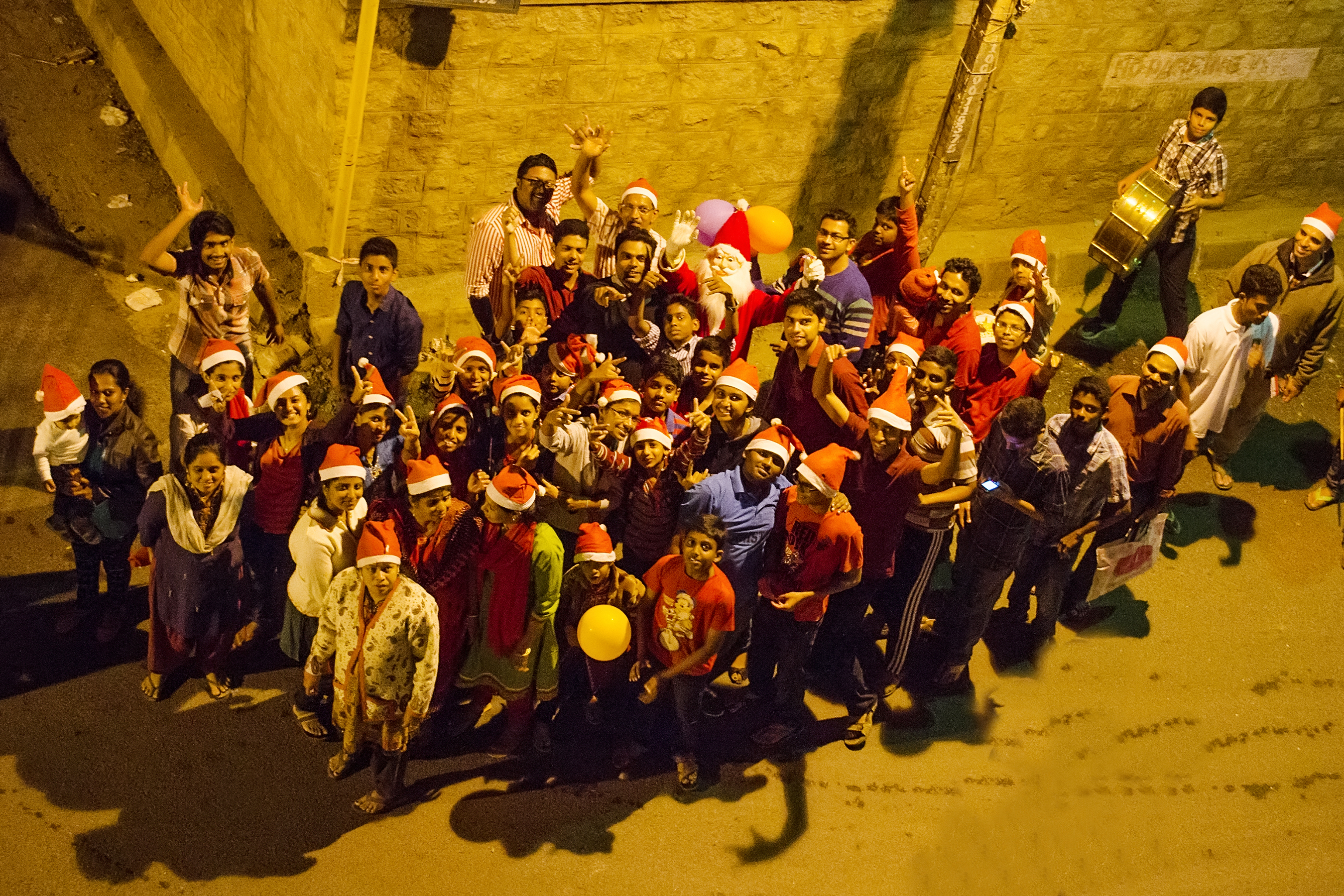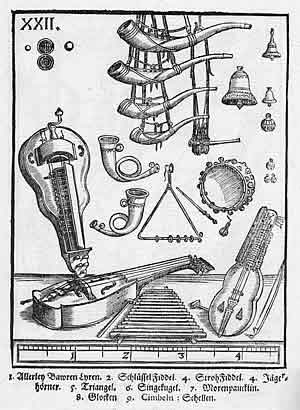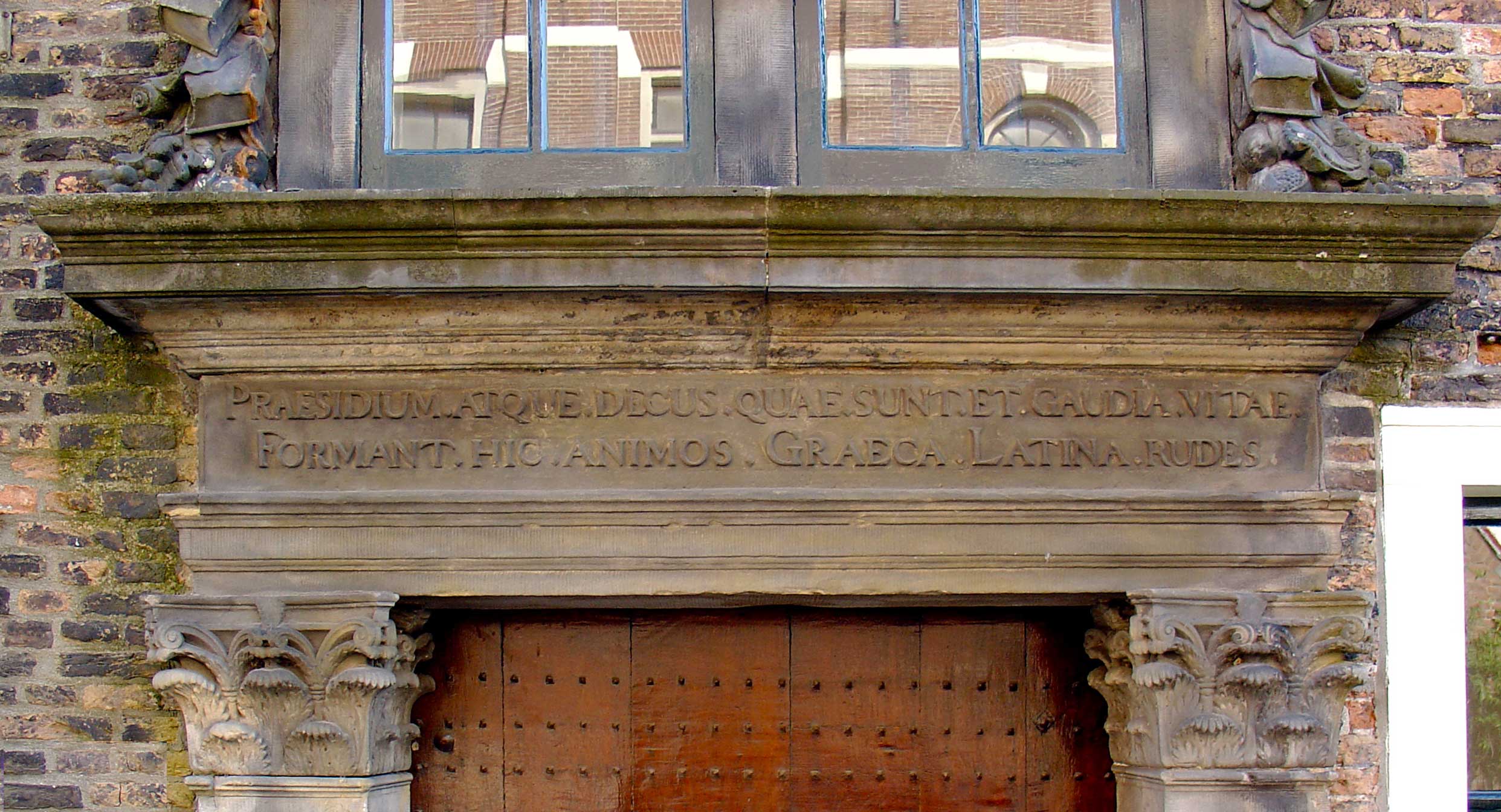|
Quempas
"Quempas" is the shortened title of the Latin Christmas carol "Quem pastores laudavere" ("He whom the shepherds praised"), popular in Germany in the sixteenth century, and used as a generic term for Christmas songs in a German caroling tradition. ''Quempas'' is also the name of a collection of old carols published by Bärenreiter since 1930. History The earliest sources of the carol are from the fifteenth century, including the ' from the Hohenfurth Monastery. Many versions exist from the sixteenth century. The most famous version is from Michael Praetorius, ''Musae Sioniae'' (1607), with the German text "Den die Hirten lobeten sehre." Text and melody Quem pastores laudavere, quibus angeli dixere, absit vobis iam timere, natus est rex gloriæ. Ad quem reges ambulabant, Aurum, Thus, Myrrham portabant, immolabant haec sincere, leoni victoriae. Christo regi Deo nato Per Mariam nobis dato merito resonat vere dulci cum melodia. Shepherds left their flocks a-straying, God's comm ... [...More Info...] [...Related Items...] OR: [Wikipedia] [Google] [Baidu] |
Bärenreiter
Bärenreiter (Bärenreiter-Verlag) is a German classical music publishing house based in Kassel. The firm was founded by Karl Vötterle (1903–1975) in Augsburg in 1923, and moved to Kassel in 1927, where it still has its headquarters; it also has offices in Basel, London, New York and Prague. The company is currently managed by , and . Since 1951, Bärenreiter has expanded its production through acquisitions and the creation of subsidiaries. From this time, the company's focus has been on the New Complete Editions series for various composers. These are urtext editions, and cover the entire work of the selected composer. Series include: J. S. Bach (the '' Neue Bach-Ausgabe'', a joint project with the Deutscher Verlag für Musik), Berlioz, Fauré, Gluck, Handel, Janáček, Mozart ('' Neue Mozart-Ausgabe''), Rossini, Saint-Saëns, Schubert ( New Schubert Edition), Telemann and others. Amateur theater For decades, Bärenreiter published hundreds of titles for ... [...More Info...] [...Related Items...] OR: [Wikipedia] [Google] [Baidu] |
List Of Christmas Carols
This list of Christmas carols is organized by language of origin. Originally, a "Christmas carol" referred to a piece of vocal music in carol form whose lyrics centre on the theme of Christmas or the Christmas season. The difference between a Christmas carol and a Christmas popular song can often be unclear as they are both sung by groups of people going house to house during the Christmas season. Some view Christmas carols to be only religious in nature and consider Christmas songs to be secular. Many traditional Christmas carols focus on the Christian celebration of the birth of Jesus, while others celebrate the Twelve Days of Christmas that range from 25 December to 5 January or Christmastide which ranges from 24 December to 5 January. As a result, many Christmas Carols can be related to Saint Stephen's Day (26 December), St John's Day (27 December), Feast of Holy Innocents (28 December), Saint Sylvester's Day (31 December), and the Epiphany. Examples of this are " We T ... [...More Info...] [...Related Items...] OR: [Wikipedia] [Google] [Baidu] |
Christmas Carol
A Christmas carol is a Carol (music), carol on the theme of Christmas, traditionally sung at Christmas itself or during the surrounding Christmas and holiday season. The term noel has sometimes been used, especially for carols of French origin. Christmas carols may be regarded as a subset of the broader category of Christmas music. History The first known Christmas hymns may be traced to 4th-century Rome. Latin hymns such as Veni redemptor gentium, written by Ambrose, Archbishop of Milan, were austere statements of the theological doctrine of the Incarnation in opposition to Arianism. Corde natus ex Parentis (''Of the Father's Heart Begotten, Of the Father's heart begotten'') by the Spanish poet Prudentius (d. 413) is still sung in some churches today. In the 9th and 10th centuries, the Christmas sequence (or prose) was introduced in Northern European monasteries, developing under Bernard of Clairvaux into a Sequence (liturgy), sequence of rhymed stanzas. In the 12th cent ... [...More Info...] [...Related Items...] OR: [Wikipedia] [Google] [Baidu] |
Latin
Latin ( or ) is a classical language belonging to the Italic languages, Italic branch of the Indo-European languages. Latin was originally spoken by the Latins (Italic tribe), Latins in Latium (now known as Lazio), the lower Tiber area around Rome, Italy. Through the expansion of the Roman Republic, it became the dominant language in the Italian Peninsula and subsequently throughout the Roman Empire. It has greatly influenced many languages, Latin influence in English, including English, having contributed List of Latin words with English derivatives, many words to the English lexicon, particularly after the Christianity in Anglo-Saxon England, Christianization of the Anglo-Saxons and the Norman Conquest. Latin Root (linguistics), roots appear frequently in the technical vocabulary used by fields such as theology, List of Latin and Greek words commonly used in systematic names, the sciences, List of medical roots, suffixes and prefixes, medicine, and List of Latin legal terms ... [...More Info...] [...Related Items...] OR: [Wikipedia] [Google] [Baidu] |
Vyšší Brod Monastery
Vyšší Brod Monastery (; ) or Hohenfurth Abbey () is a Catholic monastery in the Czech Republic. Description As one of the most important historical landmarks of South Bohemia, the monastery is recognized as a cultural monument by the Ministry of Culture. The Cistercian monastery is located on the right bank of the river Vltava The Vltava ( , ; ) is the longest river in the Czech Republic, a left tributary of the Elbe River. It runs southeast along the Bohemian Forest and then north across Bohemia, through Český Krumlov, České Budějovice, and Prague. It is com ..., in the south-west part of the town of Vyšší Brod. It was founded in 1259. Leopold Wackarž was formerly the abbot. The Mass is celebrated exclusively according to the 1962 edition of the Roman Missal ( Traditional Latin Mass) with Cistercian propers. It also houses a branch of the Prague Postal Museum. Gallery File:Klášter (Vyšší Brod) (2).jpg, Church of the Assumption of the Virgin Mar ... [...More Info...] [...Related Items...] OR: [Wikipedia] [Google] [Baidu] |
Michael Praetorius
Michael Praetorius (probably 28 September 1571 – 15 February 1621) was a German composer, organist, and Music theory, music theorist. He was one of the most versatile composers of his age, being particularly significant in the development of musical forms based on Protestant Reformation, Protestant hymns. Life Praetorius was born Michael Schultze, the youngest son of a Lutheran pastor, in Creuzburg, in present-day Thuringia. After attending school in Torgau and Zerbst, he studied divinity and philosophy at the University of Frankfurt (Oder). He was fluent in a number of languages. After receiving his musical education, from 1587 he served as organist at the Marienkirche in Frankfurt. From 1592/3 he served at the court in Wolfenbüttel, under the employ of Henry Julius, Duke of Brunswick-Lüneburg. He served in the duke's Staatsorchester Braunschweig, State Orchestra, first as organist and later (from 1604) as ''Kapellmeister'' (court music director). [...More Info...] [...Related Items...] OR: [Wikipedia] [Google] [Baidu] |
Evangelisches Gesangbuch
''Evangelisches Gesangbuch'' (''EG''; , "Protestantism, Protestant song book") is the current hymnal of German-language congregations in Germany, Alsace and Lorraine, Austria, and Luxembourg, which was introduced from 1993 and 1996, succeeding the ''Evangelisches Kirchengesangbuch'' (''EKG''). ''Evangelisches Gesangbuch'' appears in 14 different regional editions, which add regional hymns to the 535 hymns common for all editions. More generally, Evangelisches Gesangbuch was the name of many Protestant hymnals in history. Literature * Gerhard Hahn, Jürgen Henkys (ed.): ''Liederkunde zum evangelischen Gesangbuch''. Vandenhoeck & Ruprecht, Göttingen 2000–2019 * Wolfgang Herbst (ed.): ''Komponisten und Liederdichter des evangelischen Gesangbuchs''. Vandenhoeck & Ruprecht, Göttingen 1999, * Ernst Lippold, Günter Vogelsang: ''Konkordanz zum Evangelischen Gesangbuch mit Verzeichnis der Strophenanfänge, Kanons, mehrstimmigen Sätze und Wochenlieder''. Vandenhoeck & Ruprecht ... [...More Info...] [...Related Items...] OR: [Wikipedia] [Google] [Baidu] |
Latin School
The Latin school was the grammar school of 14th- to 19th-century Europe, though the latter term was much more common in England. Other terms used include Lateinschule in Germany, or later Gymnasium. Latin schools were also established in Colonial America. Emphasis was placed on learning Latin, initially in its Medieval Latin form. Grammar was the most basic part of the trivium and the Liberal arts. Latin schools aimed to prepare students for university, as well as seeking to enable those of middle-class status to rise above their station. It was therefore not unusual for children of commoners to attend Latin schools, especially if they were expected to pursue a career within the church.Wiesner-Hanks, p122. Although Latin schools existed in many parts of Europe in the 14th-century and were more open to the laity, prior to that the Church allowed for Latin schools for the sole purpose of training those who would one day become clergymen.Grendler, p6. Latin schools began to devel ... [...More Info...] [...Related Items...] OR: [Wikipedia] [Google] [Baidu] |
Konrad Ameln
Konrad Ameln (6 July 1899 – 1 September 1994) was a German hymnologist and musicologist, who wrote standard works about Protestant church music. Life Childhood, youth and academic years Born in Neuss, Ameln grew up in Kassel and attended the humanistic Wilhelms-Gymnasium there. He took part in the First World War as a volunteer and was captured, then released in 1919. After his return he received his Abitur without an examination and began studying musicology with Friedrich Ludwig at the University of Göttingen in 1920. In 1921 he changed to Wilibald Gurlitt at the University of Freiburg. There he achieved the doctorate in 1924 with a dissertation on ''Geschichte der Melodien " Innsbruck, ich muss dich lassen" and " Ach Gott, vom Himmel sieh darein"''. Activities Since his youth Ameln was active in the Wandervogel movement and the . He published from 1925 to 1933 in the magazine ''Die Singgemeinde'' (The singing community) of the . After further studies and activity a ... [...More Info...] [...Related Items...] OR: [Wikipedia] [Google] [Baidu] |
Biographisch-Bibliographisches Kirchenlexikon
The ''Biographisch-Bibliographisches Kirchenlexikon'' (''BBKL'') is a German biographical encyclopedia covering deceased persons related to the history of the church, philosophy and literature, founded by Friedrich Wilhelm Bautz, the first volume of which appeared in 1975.. It features over 20,000 articles, many of which were made freely available online between 1996 and 2011. The online service now operates on a subscription model. Though, courtesy of the Internet Archive, some such entries remain available as archived pages and many of the print volumes are available to read online (with free registration). History Shortly after the Second World War, the pastor Friedrich Bautz developed the idea of writing a biographical lexicon of protestant church figures. His son, Traugott Bautz (1945–2020), recalls that his father had originally envisioned writing a two-volume handbook. However, the family's remote and isolated location in the small village of Holtorf (now part of ... [...More Info...] [...Related Items...] OR: [Wikipedia] [Google] [Baidu] |
Carols For Choirs
''Carols for Choirs'' is a collection of choral scores, predominantly of Christmas carols and hymns, first published in 1961 by Oxford University Press. It was edited by Sir David Willcocks and Reginald Jacques, and is a widely used source of carols in the British Anglican tradition and among British choral societies. A second volume was published in 1970, edited by David Willcocks and John Rutter, and the collection is now available in six volumes. A compendium edition was published later. In addition to music for Christmas, the collection also offers works that are suitable for other Christian festivals such as Advent and Epiphany. The books contain commonly performed carols and their harmony arrangements, with descants from the editors (mainly Willcocks) which have become the ''de facto'' standard descants for these tunes in the Anglican communion in the UK. Most of the arrangements were originally written for use by the Choir of King's College, Cambridge or the Bach ... [...More Info...] [...Related Items...] OR: [Wikipedia] [Google] [Baidu] |
John Rutter
Sir John Milford Rutter (born 24 September 1945) is an English composer, conductor, editor, arranger, and record producer, mainly of choral music. Biography Born on 24 September 1945 in London, the son of an industrial chemist and his wife, Rutter grew up living over the Globe pub on London's Marylebone Road. He was educated at Highgate School, where fellow pupils included John Tavener, Howard Shelley, Brian Chapple and Nicholas Snowman. As a chorister there, Rutter took part in the first (1963) recording of Britten's '' War Requiem'' under the composer's baton. He thence read music at Clare College, Cambridge, where he was a member of the choir. Whilst an undergraduate, he had his first compositions published, including the " Shepherd's Pipe Carol". He served as director of music at Clare College from 1975 to 1979, and led the choir to international prominence. In 1981, Rutter founded his own choir, the Cambridge Singers, which he conducts, and with which he has made ma ... [...More Info...] [...Related Items...] OR: [Wikipedia] [Google] [Baidu] |




